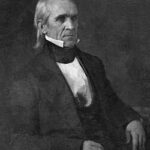President James K. Polk’s acquisition of vast Mexican territories fundamentally transformed America’s slavery debate. The Treaty of Guadalupe Hidalgo added 525,000 square miles to the United States. This massive territorial expansion immediately raised critical questions about slavery’s future.
The Treaty of Guadalupe Hidalgo Decision
Polk negotiated the treaty ending the Mexican-American War in February 1848. The agreement secured California, Nevada, Utah, and parts of four other states. Mexico received $15 million in compensation for these territories. The president believed westward expansion fulfilled America’s manifest destiny. 💰 However, he underestimated the political consequences of this acquisition.
The Slavery Extension Crisis
The Polk Mexican territory acquisition reignited fierce debates about slavery’s expansion. Northern politicians demanded these new lands remain free territories. Southern leaders insisted on equal rights to bring enslaved people westward. ⚠️ The Missouri Compromise of 1820 couldn’t address territories this far west.
Political Consequences
Congress faced immediate pressure to resolve the territorial slavery question. The Wilmot Proviso attempted to ban slavery in all acquired lands. Southern states threatened secession if excluded from western expansion. 📊 These debates consumed congressional sessions for years after 1848.
Impact:
Polk’s territorial acquisition created long-lasting consequences that reshaped American politics and society. The immediate effects rippled through every aspect of national life for decades.
Immediate Political Upheaval
The slavery extension crisis dominated the 1848 presidential election immediately. The Free Soil Party emerged specifically to oppose slavery expansion. Both Whigs and Democrats split along sectional rather than party lines. 🔥 Congressional debates became increasingly hostile and personal between regions. The Compromise of 1850 temporarily resolved tensions but satisfied neither side completely.
Constitutional and Legal Ramifications
The territorial question challenged existing constitutional interpretations about federal power. State sovereignty advocates argued Congress couldn’t restrict slavery in territories. Popular sovereignty supporters wanted territorial residents to decide the issue locally. The Supreme Court later addressed these conflicts in the Dred Scott decision. ⚠️ Constitutional scholars debated whether the Constitution protected slavery expansion rights.
Path to Civil War
The Polk Mexican territory crisis established patterns that led to national division. Sectional political parties replaced national organizations by the 1850s. The Republican Party formed primarily to oppose slavery’s western expansion. 📉 Compromise became increasingly difficult as positions hardened over time. The same territorial questions emerged again with Kansas-Nebraska Act debates. Each new crisis built upon unresolved tensions from 1848’s territorial acquisition decisions.
